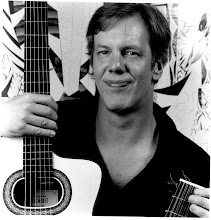
Modern players tend to have fierce loyalties contingent upon the style of music in which they have invested, and every type of electric guitar described is still in both production and wide use, depending upon the musical style. The guitars pictured all feature variants of wood-grain finishes, with the ES 175 given in the article above in one of the oldest an most desirable color schemes, "natural." Guitars today come in every imaginable color.
Moreover, the original designs were so good and produced such distinctive and attractive sounds that two phenomena have resulted. First, the older instruments, called the vintage market, have become highly desirable and very expensive. Manufacturers have also realized that some of the cost-cutting measures of guitar production in the late twentieth century have not been beneficial to the quality and sound of their guitars, and all the major companies now produce guitars to "spec," that is, to the original specifications and also "spec" guitars with modern features. These instruments are invariably among the most expensive offerings. Some models have stayed close to the mark in high quality throughout the life of their runs, such as the Gibson L5; others, such as Fender's Stratocaster and Telecaster, suffered long periods in which the quality was inferior. Over the last couple years, Fender has made giant strides in restoring the quality in the top of the line models.
In addition, the slight variations within a model, that is differences in small features (i.e. gold hardware versus silver hardware) have begun to figure into the value of vintage instruments, so that a guitar with a natural blonde finish is worth more at resale than one with a tobacco sunburst: a tobacco sunburst is worth more than a red guitar, but a red guitar is worth more than any of the other possible colors unless the color was featured on a rare model.
With an eye to the future, the guitar companies have also begun to produce "special editions," really the basic guitar with some little, non-standard feature, as a means to bloat both the price new, used and, later, vintage. Of all the electric guitars ever made, Fender guitars produced before the sale of the company in 1964 to CBS and all Gibson guitars ever made are among the most desirable. Gibson is regarded as the Cadillac of guitar makers (yes, Cadillac--there is no cultural room for the metaphor of the Mercedes here), have the greatest prestige, and are the most expensive.
The ES 175 was named in the 1950s for its price of $175; the current catalog lists the same guitar at nearly $6000. The new Super 400 carries a price tag as high as $20,000! Rare ES 175 models from the 1950s and 1960s sell for as much as $15,000, though the price for an older regular production model is much less, usually $2500-$6000. Even at the low end, older instruments go for considerably more than their prices when new. Collecting has driven prices, even in a rough economy up so that vintage Gibson guitars are now investments.
Similar collector situations exist among other brands, with pre-CBS Fenders, pre-Fender Gretsch and Guild guitars, and pre-Gibson Epiphones commanding the high prices. Notice here that acquisition of Epiphone by Gibson has meant a deterioration of Epiphone quality and the acquisition of Guild by Fender has led to the complete collapse of the manufacture of electric Guild guitars. Fender's involvement does not always spell trouble, however. The Gretsch family has recently regained control of company that carries their name, and Fender distributes these instruments.
New, higher end Gretsch guitars, while no longer produced in the USA but in Japan, have not sacrificed quality and are beginning to build a reputation in the current market. The new Gretschs sound somewhat like the older ones or at least like Gretsch guitars, in general, and they can be purchased for considerably less than comparable new Gibsons. While it is true that Gretsch guitars are not exactly regarded as jazz guitars and that they are their own animal apart from other guitars by other manufacturers, the solid-face Synchromatic and Country Club models perform surprisingly well in jazz settings.

No comments:
Post a Comment